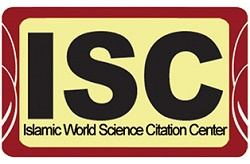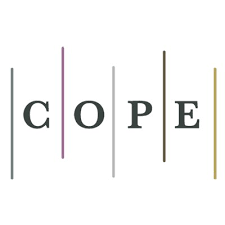The Role of Social Media Platforms in Facilitating COVID-19 Pandemic Protocols
DOI:
https://doi.org/10.52547/ijimes.2.1.79DOR:
https://dorl.net/dor/20.1001.1.27832678.2022.2.1.6.3Keywords:
COVID-19 pandemic, COVID-19 protocols, COVID-19, Protocols, Social media platformsAbstract
Purpose: The COVID-19 pandemic led to pain and panic across the globe and social media became the base for information sharing and communication. The purpose of this study was to investigate the role of social media platforms in facilitating COVID-19 pandemic protocol in society.
Methodology: The study looks at the role of social media facilitating COVID-19 pandemic healthcare protocols. The study deployed desktop research methodology to address the research objective.
Findings: Through the study, the research established that social media assist people to understand different protocols to protect themselves, keep social or physical distance, stay at home and many more.
Originality/Value: The role of social media in society is no longer new, research on the impact in observing COVID-19 pandemic protocols is missing in the literature.
Social media provides a decentralized platform for bidirectional communication, information sharing, and the flow of content from different sources. The platforms allow users (individuals) and organizations to generate content and distribute it among the audience in real-time during a crisis. The COVID-19 pandemic is a global health crisis that exposed the world’s weak health systems and brought about national lockdowns in different parts of the world. The lockdown measures saw an increased dependence and application of social media platforms to distribute information, communication and content among users. This article looks at the role of social media platforms in facilitating COVID-19 pandemic protocols across the globe
Downloads
References
Abbas, J., Wang, D., Su, Z., & Ziapour, A. (2021). The role of social media in the advent of COVID-19 pandemic: crisis management, mental health challenges and implications. Risk management and healthcare policy, 14, 1917.
Al-Dmour, H., Salman, A., Abuhashesh, M., & Al-Dmour, R. (2020). Influence of social media platforms on public health protection against the COVID-19 pandemic via the mediating effects of public health awareness and behavioural changes: integrated model. Journal of medical Internet research, 22(8), e19996.
Centres for Disease Control and prevention (2021). How to Protect Yourself & Others. Retrieved from https://www.cdc.gov/coronavirus/2019-ncov/prevent-getting-sick/prevention.html
Cinelli, M., Quattrociocchi, W., Galeazzi, A., Valensise, C. M., Brugnoli, E., Schmidt, A. L., ... & Scala, A. (2020). The COVID-19 social media infodemic. Scientific Reports, 10(1), 1-10.
González-Padilla, D. A., & Tortolero-Blanco, L. (2020). Social media influence in the COVID-19 Pandemic. International braz j urol, 46, 120-124.
Hammad, M. A., & Alqarni, T. M. (2021). Psychosocial effects of social media on the Saudi society during the Coronavirus Disease 2019 pandemic: A cross-sectional study. Plos one, 16(3), e0248811.
Hussain, W. (2020). Role of social media in COVID-19 pandemic. The International Journal of Frontier Sciences, 4(2), 59-60.
Lacsa, J. E. M. (2021). # COVID19: Hashtags and the power of social media. Journal of Public Health.
Lang, J., Erickson, W. W., & Jing-Schmidt, Z. (2021). # MaskOn!# MaskOff! Digital polarization of mask-wearing in the United States during COVID-19. PloS one, 16(4), e0250817.
Nozari, H., Tavakkoli-Moghaddam, R., & Gharemani-Nahr, J. (2022). A Neutrosophic Fuzzy Programming Method to Solve a Multi-Depot Vehicle Routing Model under Uncertainty during the COVID-19 Pandemic. International Journal of Engineering, Transactions B: Applications, 360-371.
Obi-Ani, N. A., Anikwenze, C., & Isiani, M. C. (2020). Social media and the Covid-19 pandemic: Observations from Nigeria. Cogent Arts & Humanities, 7(1), 1799483.
Ojo, A., Guntuku, S. C., Zheng, M., Beidas, R. S., & Ranney, M. L. (2021). How health care workers wield influence through Twitter hashtags: Retrospective cross-sectional study of the gun violence and COVID-19 public health crises. JMIR Public Health and Surveillance, 7(1), e24562.
Pastor, C. K. (2020). Sentiment analysis of Filipinos and effects of extreme community quarantine due to coronavirus (COVID-19) Pandemic. Available at SSRN 3574385.
Priadana, A., & Tahalea, S. P. (2021, March). Hashtag activism and message frames: social network analysis of Instagram during the COVID-19 pandemic outbreak in Indonesia. In Journal of Physics: Conference Series (Vol. 1836, No. 1, p. 012031). IOP Publishing.
Stewart, A, (2020). What's trending during coronavirus pandemic? A definitive guide to the most used hashtags. https://www.thenationalnews.com/arts-culture/what-s-trending-during-coronavirus-pandemic-a-definitive-guide-to-the-most-used-hashtags-1.996208
Szmelter-Jarosz, A., Ghahremani-Nahr, J., & Nozari, H. (2021). A neutrosophic fuzzy optimisation model for optimal sustainable closed-loop supply chain network during COVID-19. Journal of Risk and Financial Management, 14(11), 519. https://doi.org/10.3390/jrfm14110519
World Health Organisation (2020). Coronavirus disease (COVID-19) advice for the public. Retrieved from https://www.who.int/emergencies/diseases/novel-coronavirus-2019/advice-for-public
Published
How to Cite
Issue
Section
License
Copyright (c) 2022 Joshua Ebere Chukwuere

This work is licensed under a Creative Commons Attribution 4.0 International License.












